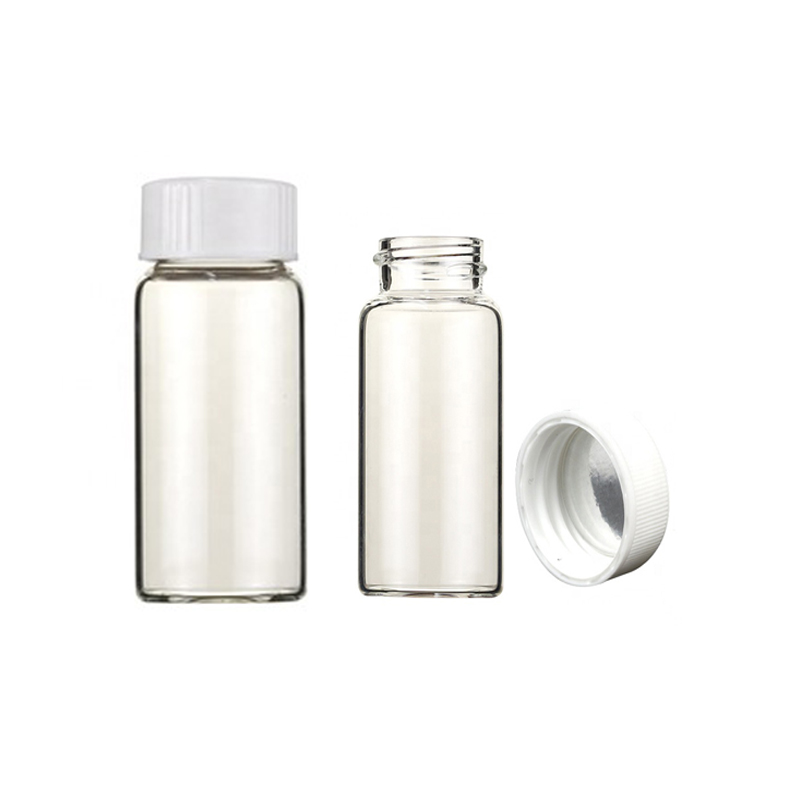Origin and Development of Scintillation Vials
🎁 Introduction
Scintillation vials are specialized containers for the storage and detection of radioactive samples and are widely used in scientific research, medical diagnostics and the nuclear industry. It is designed to effectively capture photons generated by radioactive decay, providing critical support for liquid scintillation counting technology. Scintillation vials play an irreplaceable role in nuclear physics, biochemistry, environmental monitoring and drug discovery.
The aim of this paper is to explore the historical evolution of scintillation vials, from their early design to modern innovations in materials and technology, and to analyze their diverse applications in contemporary research and industry.
🎁 Origins and Early Development of Scintillation Vials
1. The rise of radioactivity detection technology
-
- Early radioactivity research: The origins of radioactivity research can be traced back to the 19th century, with landmarks including Wilhelm Roentgen’s discovery of x-rays (1895) and Henry Becquerel’s discovery of natural radioactivity (1896). However, it was the research of Marie Curie and and Pierre Curie that really pushed the field forward. They discovered the radioactive elements polonium and radium and introduced the concept of “radioactivity” for the first time. These discoveries not only revealed the internal structure of the atomic nucleus, but also laid the foundation for the development of radioactivity detection technology.
- The emergence of scintillation counting technology: In the mid-20th century, with the rapid development of physics, scientists began to look for more efficient methods of detecting radioactivity. Scintillation counting technology came into being, the principle is to use the energy released by radioactive decay to excite the scintillator (such as crystals or liquids) to produce photons, and then through the photomultiplier tube will be converted into electrical signals for measurement. This technique is characterized by high sensitivity and fast response, and has rapidly become a mainstream method for radioactivity detection. Scintillation vials, as the core container in the liquid scintillation counting technique, are used to load radioactive samples and scintillation liquids, and have become an indispensable tool in the laboratory.
2. Materials and designs of early scintillation vials
-
- Use of glass: Early scintillation vials were mainly made of glass, especially borosilicate glass. This material has excellent transparency, chemical stability and background radioactivity, and is capable of meeting the stringent requirements of radioactivity detection. The transparency of glass allows the experimenter to visualize the state of the sample, while its chemical inertness ensures that the sample will not react or become contaminated during storage and testing.
- Initial shape, volume and sealing method: Early scintillation vials are relatively simple in design, usually cylindrical, and this shape facilitates production and operation, as well as the uniform distribution and detection of photons. Common volume sizes were 7 ml and 20 ml, a size that could hold enough samples and was also suitable for standardized laboratory operations.
The design and choice of materials during this period, although simple, laid the foundation for the functionality and reliability of scintillation vials, paving the way for their widespread use in scientific research.
🎁 Improvements and Technical Innovations in Scintillation Vials
1. Material innovation
-
- Application of plastic scintillation vials: with the development of material science, plastic is gradually becoming an important choice for scintillation vials. Materials such as polystyrene’s polyethylene are widely used for their lightweight, chemical resistance and low cost. Plastic scintillation vials not only reduce the risk of breakage. It also reduces the safety hazards in the operation of the transportation box.
- Development of high transparency and low background radiation materials: in order to meet the needs of high-sensitivity experiments, scientists have developed specialized plastic materials with high transparency and low background radiation. These materials can minimize the background noise in the experiment and improve the accuracy and reliability of detection.
2. Upgrading of sealing and leakage prevention technology
-
- Optimized design of screw caps and chemical-resistant seals: Modern scintillation vials feature precision-designed screw caps and chemical-resistant seals (e.g. PTFE or silicone) to ensure that samples do not leak or evaporate during storage and testing. This design is particularly useful for the detection of volatile or corrosive samples.
- Improved heat and pressure resistance for different experimental environments: In order to meet the needs of extreme experimental conditions such as high temperatures and high pressures, the materials and sealing technology of the scintillation vials have been specifically improved.
3. Volume and morphological diversity
-
- Different sizes for different scenarios: modern scintillation bottles offer a wide range of sizes. Small volume scintillation vials are suitable for experiments with limited sample volume, while large volume vials are suitable for scenarios requiring high sensitivity detection.
- Standardized design for autosampling and high-throughput analysis: With the development of laboratory automation, the design of scintillation bottles has been gradually standardized to fit the needs of autosamplers and high-throughput analytical equipment.
These technological innovations have not only expanded the range of applications for scintillation bottles, but have also improved their performance and reliability, making them an indispensable tool in modern scientific research and industrial testing.
🎁 Modern Applications for Scintillation vials
1. Radioisotope research
-
- Sample storage in nuclear medicine: In positron emission tomography (PET) and single photon emission computed tomography (SPECT) techniques, scintillation vials are used to store radiotracers (e.g., fluorodeoxyglucose, ¹⁸F-FDG) to ensure that they are Mars-stable and to facilitate subsequent testing. These tracers are accurately quantified by scintillation counting techniques, providing critical data for cancer diagnosis and brain function studies.
- Biomedical labeling experiments: Radioisotopes are long used to label molecules in protein labeling, DNA sequencing or cell tracking experiments. Scintillation vials help scientists analyze molecular interactions and metabolic pathways by detecting decay signals with high sensitivity.
2. Environmental monitoring and the nuclear industry
-
- Radioactive contamination detection: In environmental monitoring, scintillation vials are used to store radionuclides in water, soil or air samples, to analyze the level of contamination by means of liquid scintillation counting techniques, and to assess the ecological impact of nuclear accidents or industrial leaks.
- Nuclear Waste Management: In nuclear waste treatment plants, scintillation vials are used to encapsulate and analyze waste samples, monitor decay rates and radiation intensity, and provide data to support safe storage and long-term management.
3. Pharmaceuticals and biotechnology
-
- Drug metabolism research: In the in vivo metabolism experiments of radiolabeled drugs, the radioactivity intensity of metabolites is detected by scintillation vials to track drug distribution, metabolic pathways and half-life.
- Molecular biology probe experiments: radiolabeled nucleic arithmetic or antibody probes are used for gene expression analysis or protein binding studies, and the efficient detection capability of scintillation vials provides a quantitative basis for molecular interaction studies.
4. Automation and high-throughput analysis
-
- Standardized design for compatibility with liquid scintillation counters: Modern scintillation vials are designed with uniform dimensions and surface finishes to ensure seamless compatibility with LSC equipment, reducing detection errors and improving data consistency.
- Robotic Lab System Integration: In high-throughput drug screening or genomics studies, standardized scintillation vials are combined with automated robotic arms and sample trays to achieve rapid detection of hundreds of samples per minute, dramatically increasing experimental efficiency and reducing labor costs.
Modern scintillation vials have become pervasive in cutting-edge fields such as nuclear medicine, environmental medicine, pharmaceuticals, and automated testing through continuous innovation in materials, sealing technology, and morphology. Their high sensitivity, safety and standardized design have not only supported breakthroughs in basic scientific research, but have also become indispensable analytical tools in industrial and physical therapy practices.
🎁 Trends and Challenges for Future Utilization
1. New materials and environmentally friendly design
-
- Exploration of biodegradable materials: As the problem of laboratory waste intensifies, the research community is accelerating the development of biodegradable or recyclable environmentally friendly materials to minimize the long-term environmental pollution of scintillation vials.
- Breakthroughs in non-glass high-transparency materials: New highly transparent polymers and nano-compliant materials are replacing traditional glass, combining lightweight, impact resistance and ultra-low background radiation properties for high-precision radioactivity detection.
2. Intelligence and automation
-
- Internet of Things and real-time monitoring: future scintillation vials may be integrated with micro-sensors, real-time tracking of sample temperature, radiation intensity and sealing status, and wireless transmission of Jaan data synchronized to the laboratory management system, remote supervision and early warning.
3. Strengthening of regulatory and security requirements
-
- Standardized management of radioactive labware: The International Atomic Energy Agency (IAEA) and national regulatory agencies are promoting stricter standards for containers of radioactive materials, requiring scintillation vials to have traceability labels and leak-resistant certifications to ensure safe transport and storage.
- Environmental regulations are closing down the industry: Regulations such as the EU’s Single-Use Plastics Directive are pushing manufacturers to switch to recyclable materials and develop low-carbon production processes.
(Challenge and balance
Technology cost and popularization challenges: High R&D costs for new environmentally friendly materials and smart systems may limit their widespread use, and prices need to be reduced through large-scale production.
Trade-off between safety and environmental protection: The long-term stability and radiation protection performance of advanced materials still need to be verified, and a balance needs to be struck between environmental goals and experimental safety.)
In the future, the development of scintillation vials will be closely centered on sustainability, intelligence and compliance, promoting their safe and efficient application in a wider range of fields.
🎁 Conclusion
Since the budding of radioactivity research in the late 19th century, scintillation vials have made the leap from humble glass containers to high-tech polymer materials. While the chemical inertness and transparency of early glass vial assemblies supported scintillation counting technology, modern material innovations have given them lightweight, low background radiation and resistance to extreme environments, driving improvements in both detection accuracy and safety.
The irreplaceability of scintillation vials is becoming increasingly evident in the fields of nuclear medicine, environmental monitoring, and drug discovery: from the precise tracking of tumor metabolism in PET imaging, to the highly sensitive analysis of nuclear waste contamination, to the automated support of high-throughput drug screening, they have always been the core medium connecting radioactive signals to scientific discovery.
In the future, with the integration of biodegradable materials, intelligent sensing technology and drive analysis systems, scintillation vials will move to a new stage of being more environmentally friendly and smarter. However, how to achieve a balance between technological innovation, cost control and safety compliance remains the key to its continued breakthrough. This evolutionary history is not only the epitome of materials science and engineering technology, but will continue to bear witness to the ambition and wisdom of mankind in exploring the microscopic world.

 Italiano
Italiano Português
Português
